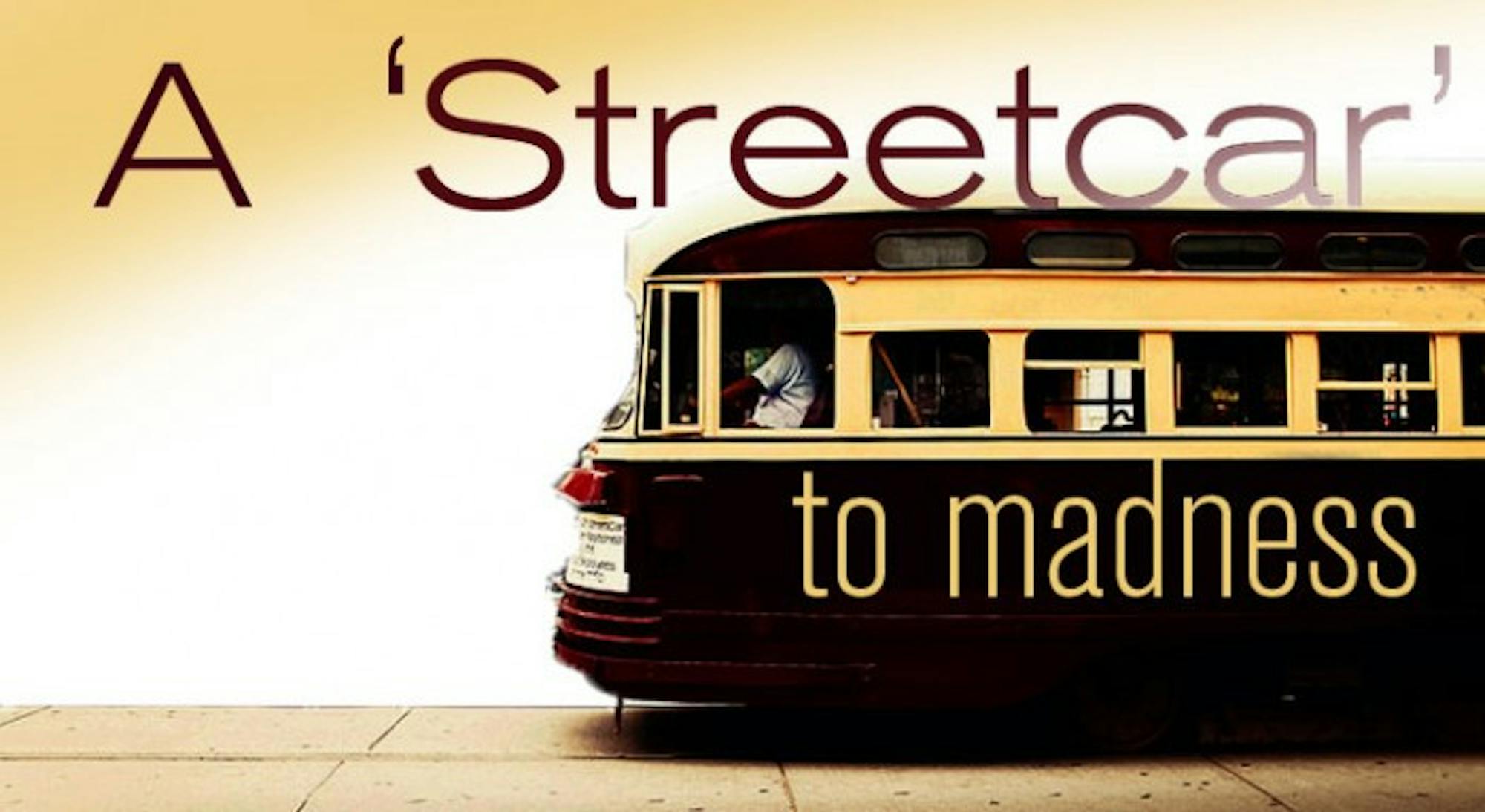
Through National Theatre Live, the godsend for theatre lovers who wish to see the best of British thespians perform from the comfort of a theater not over the Atlantic, DeBartolo Performing Arts Center hosted its first set of screenings of the newest stage adaptation of "Streetcar." Currently an intriguing attraction at London’s Young Vic theater and in screenings across the U.K. and U.S., this variation casts its time and place decades after its original setting between post-war aftermath and pre-economic boom. Everything onstage is white — the furniture, the people — but what’s probably most interesting is the shape of the space in which the action occurs.
Imagine a silver, steel skeleton of bars creating a rectangle, almost an escapable cage, with the capacity for a kitchenette, bedroom, bath and balcony. This is where the play's three main characters interact while the escapable cage rotates. The idea is to interpret the individual psyches of the three occupants within the cramped home at alternating perspectives throughout the story. At one moment, we might see the whole ensemble in three different rooms living in completely distant worlds.
I admire and appreciate this effect for the sake of enlivening the audience’s experience in understanding how each character unknowingly steps on another’s toes, crescendoing to the play's climax. My only complaint of this rotating cage is its distraction from specific moments I would have preferred to watch without a staircase turning in front of it.
The obvious distinction of film from live theatre is the physical viewpoint from which you witness the plot. A camera has the luxury of shooting from infinite angles, allowing choice context for the director and cinematographer. But as a play, director Benedict Andrews has only a stage and set seating from which his actors can be seen. Despite how Andrews and his team wish to (literally) spin "Streetcar," Williams’s work here doesn't translate on stage.
The lovely Gillian Anderson, vibrantly fulfilling a lifelong dream portraying Blanche Dubois, speaks with a genteel drawl as slow as honey and as smooth as melted butter. Blanche possess one of the most sibylline names in twentieth century American literature, translating from French as “white woods.” Only New Orleans could serve as the proper setting to accompany such ostentatious symbolism.
The challenge in making Blanche believable and not simply a one-dimensional damsel in distress comes in how her complexity is approached by the actress. Her presence is undoubtedly the most captivating and abstract, an element outlined in Anderson’s portrayal against her brother-in-law, Stanley Kowalski, played both savagely and humanely by Ben Foster. Blanche’s sister, Stella (Vanessa Kirby), is the reluctant human combat zone backdropped between Blanche and Stanley’s growls and hisses.
What unfolds from the window of this "Streetcar" is not just another chance to watch Blanche dissolve from stability to shattered certitude or Stanley scream out for Stella in the night’s smog of jazz and heat. As always with this tragedy, there is the question of whose responsibility weighs on another’s loss the most. What is the loss really? Has anything been gained? These and other laments echo from the bars of the escapable cage which transitions to a mental institution. Would any psychiatrist aid Blanche Dubois, he would surely need to understand her descent into madness, a fall she took long before she ever came to face Stanley and his rotating infirmary of unwelcome and unforgiving solitude.













